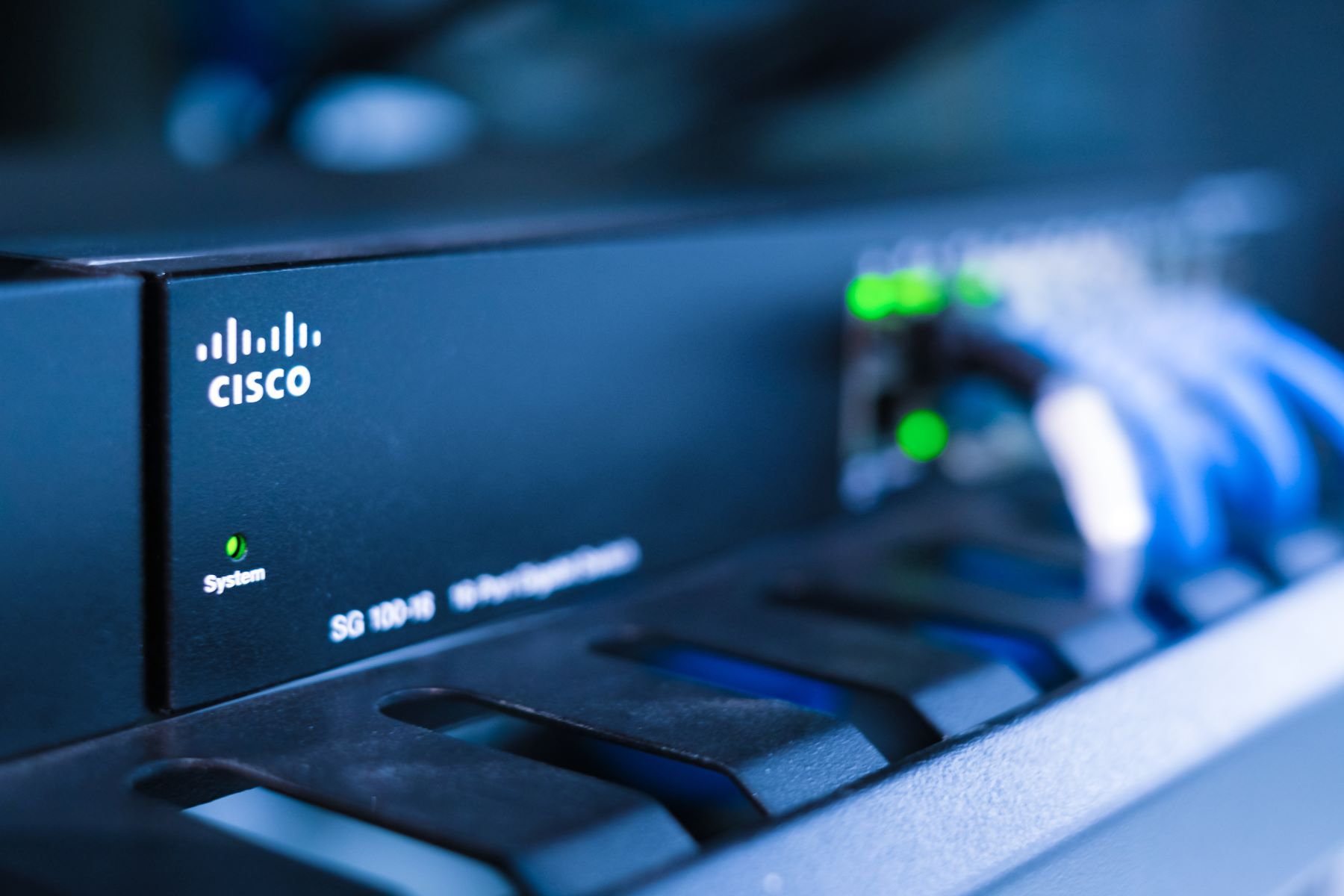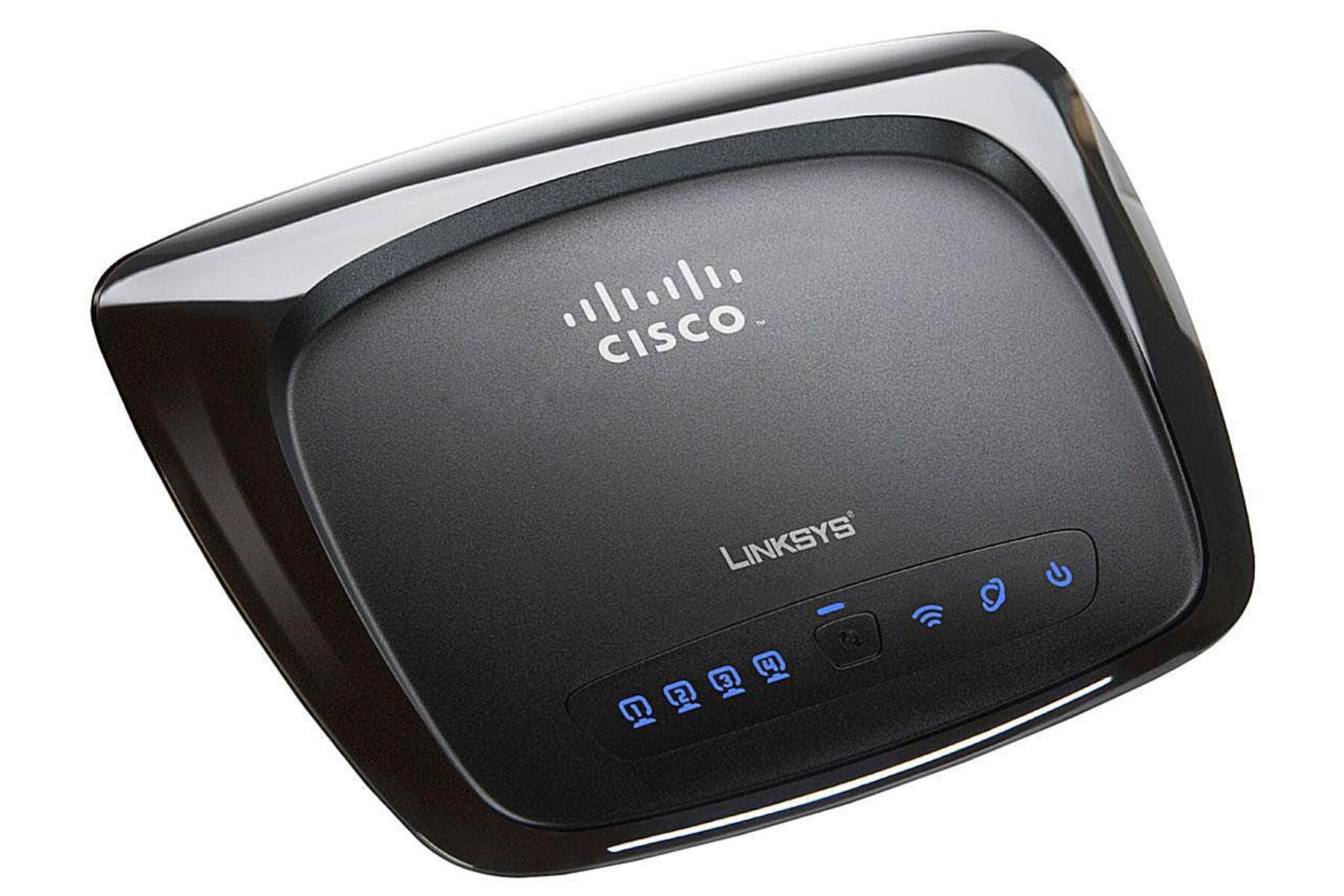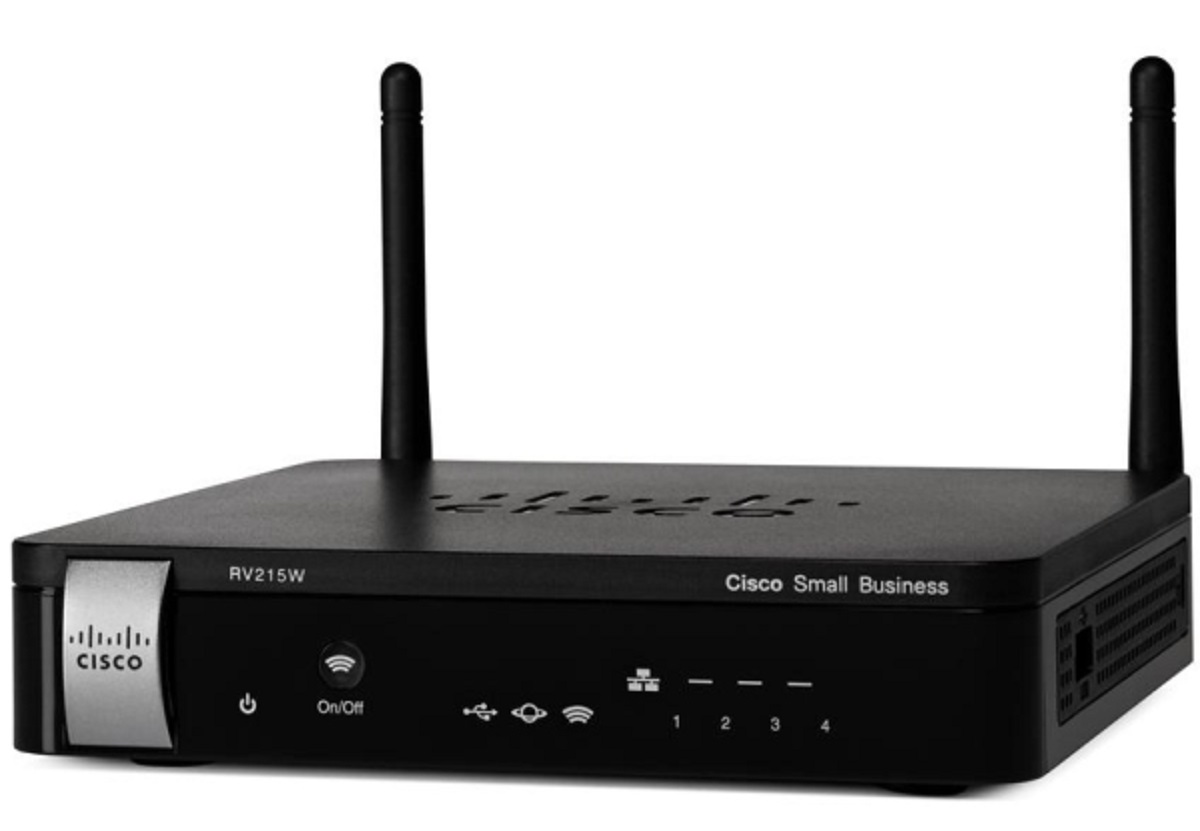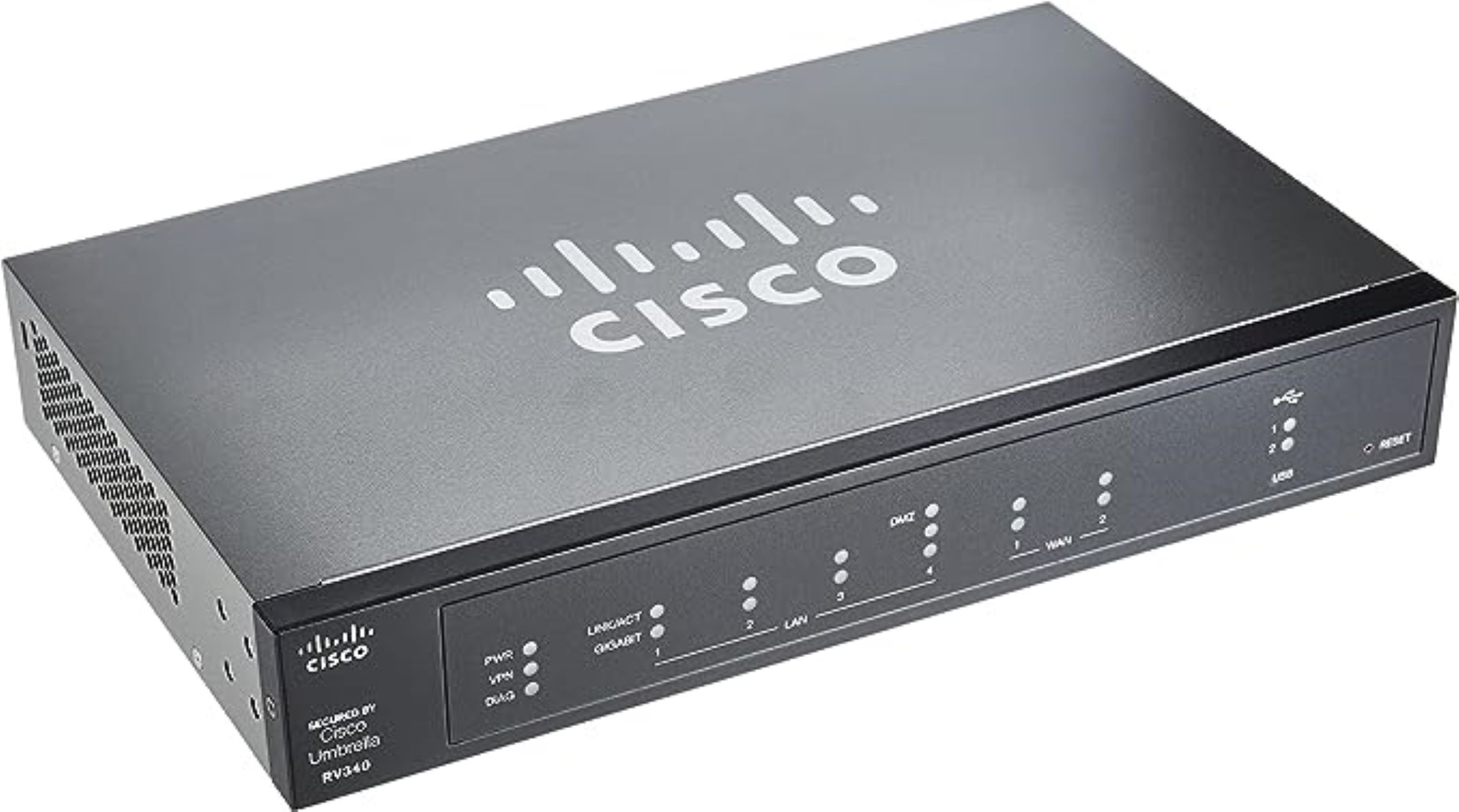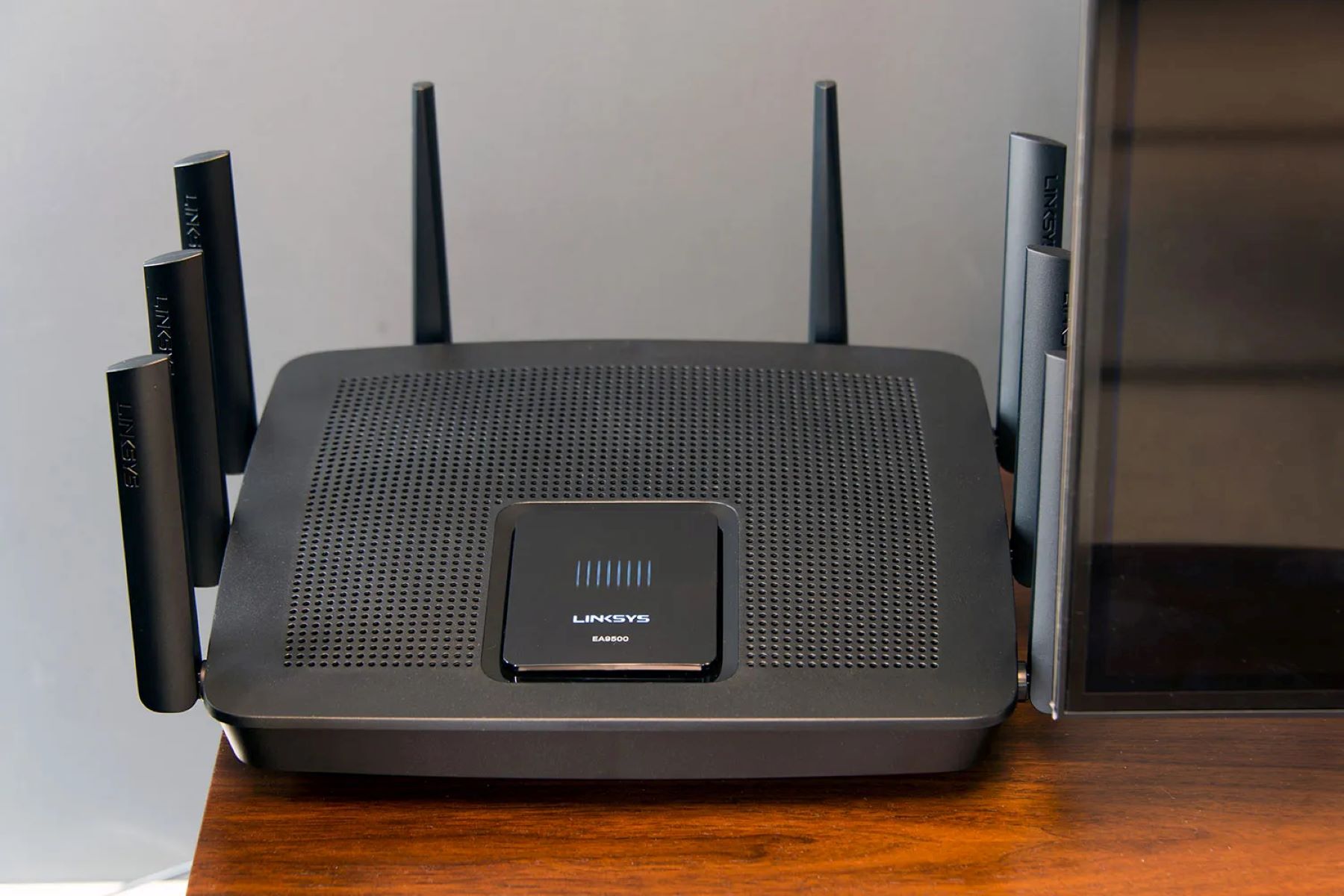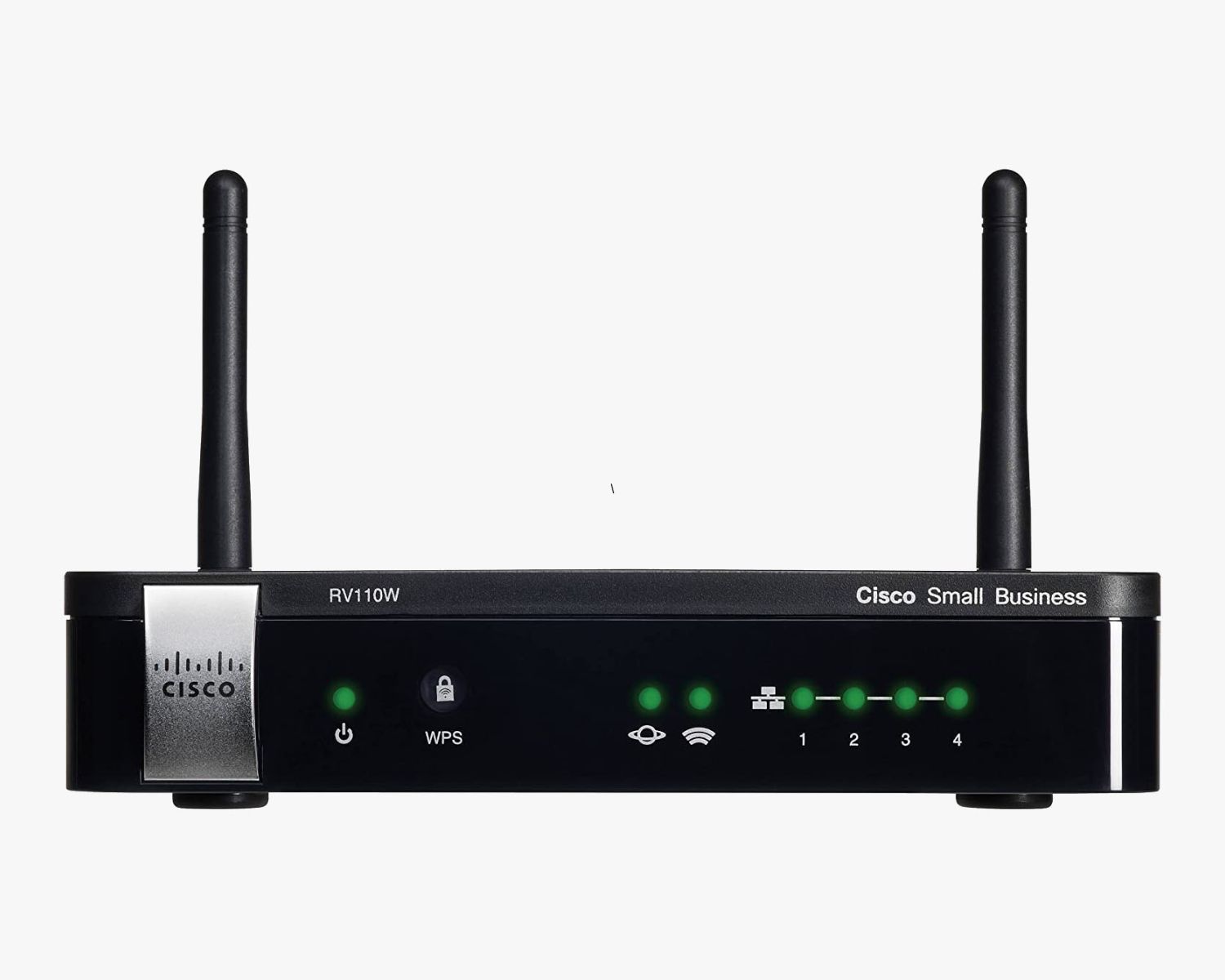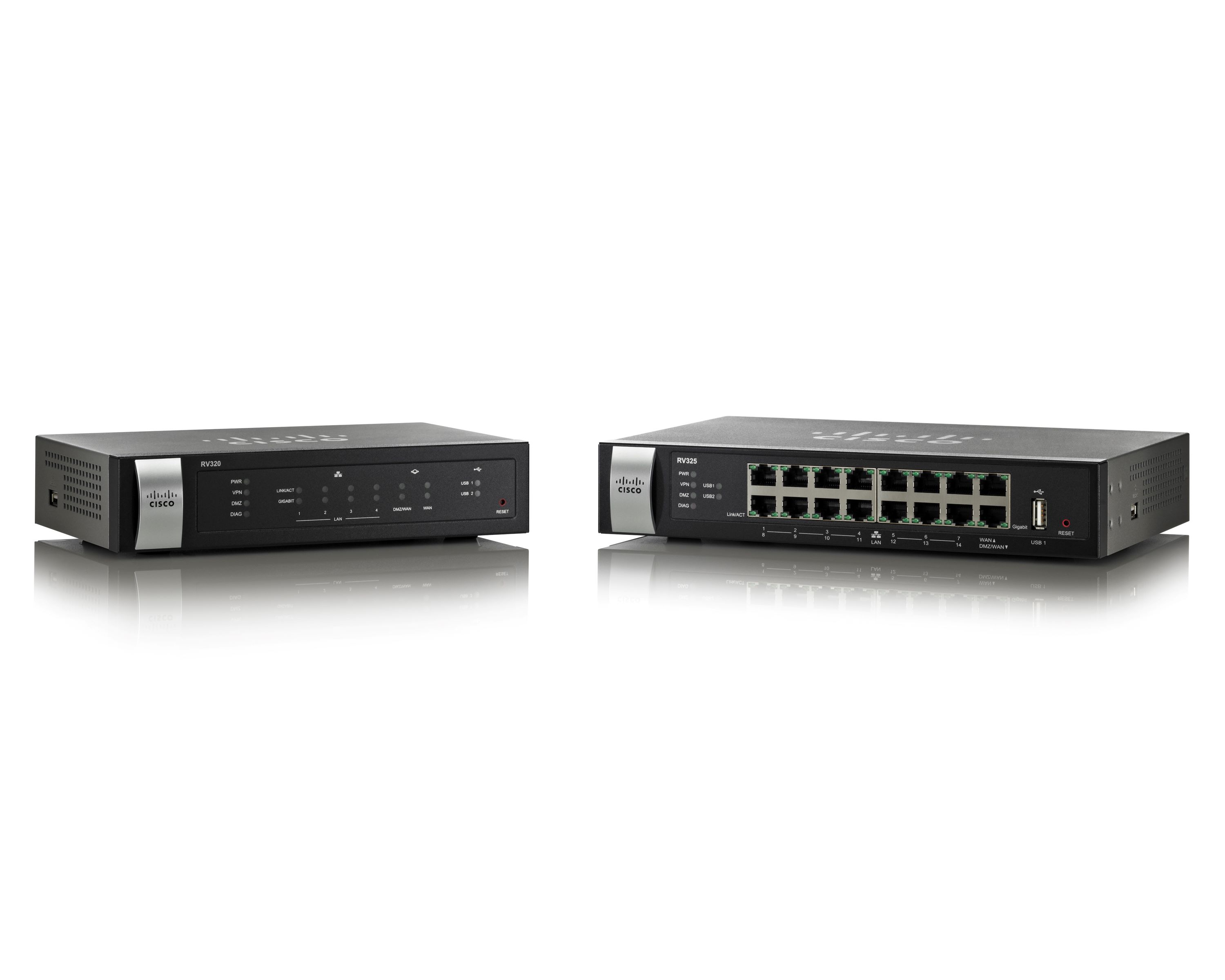Introduction
Configuring Cisco routers is an essential skill for network engineers and IT professionals. A Cisco router allows for the connection and communication between different networks, enabling data transfer and internet connectivity. Whether you’re setting up a new network or making changes to an existing one, properly configuring a Cisco router is crucial for ensuring optimal performance and security.
In this article, we will guide you through the process of configuring Cisco routers, step-by-step. We will cover everything from gathering requirements to verifying the configuration. By following these instructions, you will be able to successfully configure your Cisco router and ensure smooth network operations.
Before we dive into the details, it’s important to note that this article assumes some basic knowledge of networking concepts and familiarity with Cisco router models. If you’re new to networking or Cisco routers, it may be helpful to first familiarize yourself with networking fundamentals and gain a basic understanding of Cisco router functionalities.
Throughout this article, we will provide clear instructions, tips, and best practices to help you configure your Cisco router effectively. Whether you’re configuring a router for a small business, a corporate network, or a home network, the principles and steps outlined in this article will serve as a solid foundation for your router configuration process.
So, let’s get started and learn how to configure Cisco routers to meet your specific networking requirements!
Gathering Requirements
Before diving into the configuration process, it’s crucial to gather all the necessary information and requirements. This step will help you determine the specific configuration needs for your Cisco router.
Start by identifying the purpose of your network and the goals you want to achieve. Are you setting up a network for a small office, a large organization, or a home network? Understanding the scope and scale of your network will guide your configuration decisions.
Next, consider the specific functionalities and features you require. This might include determining if you need support for Voice over IP (VoIP), Virtual Private Network (VPN) connections, or Quality of Service (QoS) settings. List down all the specific requirements to ensure you address them during the configuration process.
Additionally, take into account the number of devices that will connect to your network. This will help you allocate IP address ranges and plan for the appropriate subnetting scheme. Consider if you need separate VLANs for specific departments or user groups.
Another crucial aspect to consider is security. Determine what security measures are necessary for your network, such as access control lists (ACLs), firewall rules, or intrusion prevention systems (IPS).
If you’re upgrading an existing network or replacing an old router, assess the current network topology and devices. Take note of any specific configurations or limitations that you need to consider when configuring the new Cisco router.
Lastly, ensure that you have access to all the necessary credentials, documentation, and software required for the configuration process. This includes the router’s administrative login information, network diagrams, and any firmware or software updates you may need.
Gathering requirements is a critical step that sets the foundation for your Cisco router configuration. By understanding the purpose, functionality, security, and size of your network, you can proceed with confidence to the next steps of connecting and configuring your Cisco router.
Connecting to the Router
Before you can start configuring your Cisco router, you need to establish a physical connection to it. Follow these steps to connect to your router:
- Identify the management interface: Locate the management interface on your Cisco router. Generally, it is labeled as “Console” or “Mgmt”. This interface is used for initial configuration and management purposes.
- Obtain the necessary cables: Depending on your router model, you will need either a console cable (RJ-45 to serial) or an Ethernet cable (RJ-45 to RJ-45). Ensure you have the appropriate cables readily available.
- Connect to the router: Connect one end of the cable to the management interface of the router and the other end to your computer’s serial port (console cable) or Ethernet port (Ethernet cable).
- Configure a terminal emulator: If you are using a console cable, open a terminal emulator software on your computer (such as PuTTY or SecureCRT) and configure it to connect to the appropriate serial port. If you are using an Ethernet cable, you may need to configure your computer’s network settings to obtain an IP address via DHCP.
- Power on the router: Connect the power cable to the router and plug it into a power outlet. Once powered on, the router will begin to boot up.
- Establish a console connection: Once the router has finished booting, establish a console connection by selecting the appropriate settings in your terminal emulator software. Typically, these settings include the baud rate (9600 bps) and data bits (8 bits).
- Verify the console connection: Once connected, you should see the router’s console prompt in your terminal emulator. This indicates a successful connection between your computer and the router.
After successfully establishing a connection to the router, you are ready to proceed to the next step: logging into the router and starting the configuration process. The physical connection ensures that you have direct access to the router’s command-line interface, allowing you to configure it according to your requirements.
Logging into the Router
Once you have established a physical connection to the Cisco router, the next step is to log in to the router’s command-line interface (CLI) to begin the configuration process. Follow these steps to log in:
- Open a terminal emulator: If you haven’t done so already, open your preferred terminal emulator software on your computer (e.g., PuTTY or SecureCRT) and establish a console connection to the router. Ensure that the correct serial port and settings (baud rate, data bits) are configured.
- Enter the login credentials: When the console connection is established, you will see the router’s CLI prompt. At the prompt, enter the default or previously configured login credentials, typically consisting of a username and password. If you are logging in for the first time, consult the router’s documentation or check with the network administrator for the default credentials.
- Optional: Enable privileged (admin) mode: Once logged in, you are initially in user mode with limited privileges. To access the full configuration capabilities, enter the
enablecommand and provide the password for privileged mode access, if prompted. This will switch you to privileged mode, also known as admin or enable mode. - Access the router’s configuration mode: From privileged mode, you can enter the global configuration mode by typing
configure terminalorconf t. This mode allows you to configure various settings on the router, such as interfaces, IP addresses, routing protocols, and security parameters.
It’s worth noting that the login and access methods may vary depending on the router model and the configuration setup. Some routers may use authentication methods like Secure Shell (SSH) or Telnet for remote access. If you plan to log into the router remotely, ensure that the necessary protocols and access methods are enabled and configured on the device.
By successfully logging into the router and gaining access to the CLI, you are now ready to start configuring the router to meet your specific network requirements. The CLI provides a powerful and flexible interface to configure and manage various aspects of the Cisco router.
Basic Configuration
Once you have successfully logged into the Cisco router’s command-line interface (CLI), you can proceed with the basic configuration steps. These initial configurations lay the foundation for the router’s functionality and network connectivity. Here’s what you need to do:
- Set the hostname: Start by setting a unique hostname for the router. The hostname identifies the router’s individual identity within the network. Use the following command:
hostname [hostname]. - Secure the device: To enhance the security of the router, set a privileged mode password to control access to the admin mode. Use the following command:
enable secret [password]. Additionally, configure a console password using theline console 0command followed bypassword [password]andlogin. - Configure the time zone: Set the correct time zone to ensure accurate timestamping for log entries and network events. Use the
clock timezone [zone] [offset]command. - Create a banner: Use banners to provide warnings, legal notices, or other messages when logging in to the router. Use the
banner motd [delimiter][message][delimiter]command. Replace the [delimiter] with a unique character and [message] with your desired warning or notice. - Save the configuration: After completing the basic configuration, save it to non-volatile memory to ensure that the configurations persist across reboots. Use the
copy running-config startup-configorwrite memorycommand.
While these basic configurations are essential, they only scratch the surface of the configuration possibilities. It is important to consult Cisco’s documentation and guides for more advanced configurations that align with your network requirements.
By completing the basic configurations, you have laid a solid foundation for the Cisco router’s functionality and security. These initial settings pave the way for further customization and fine-tuning of the router’s capabilities.
Configuring Interfaces
Configuring interfaces on your Cisco router is a crucial step in establishing network connectivity. Interfaces serve as the entry and exit points for network traffic, allowing communication between devices. Follow these steps to configure interfaces:
- Identify the interfaces: Determine the interface types available on your Cisco router, such as Ethernet, FastEthernet, GigabitEthernet, Serial, or Wireless interfaces. You can use the
show ip interface briefcommand to list all the interfaces on the router. - Select the interfaces: Choose the interfaces that you want to configure based on your network design and connectivity requirements. For example, if you have multiple Ethernet ports, select the appropriate interface for your needs.
- Enter interface configuration mode: Use the
interface [interface-name]command to enter the configuration mode for the desired interface. Replace [interface-name] with the name of the interface you want to configure (e.g., GigabitEthernet0/1). - Configure the interface settings: In the interface configuration mode, you can set various settings, such as IP address, subnet mask, speed, duplex mode, and description. For example, to configure the IP address of an interface, use the
ip address [ip-address] [subnet-mask]command. - Enable the interface: By default, interfaces are administratively disabled. Activate the interface using the
no shutdowncommand to enable it for network traffic. - Repeat for additional interfaces: If you have multiple interfaces to configure, repeat steps 3-5 for each interface.
- Save the configuration: After configuring the interfaces, save the configuration to ensure that your changes are retained. Use the
copy running-config startup-configorwrite memorycommand.
Configuring interfaces correctly is crucial for enabling network connectivity and ensuring smooth data transmission. Make sure to assign the appropriate IP addresses, subnet masks, and other relevant settings to each interface. Additionally, consider any specific requirements or protocols that need to be enabled on the interfaces, such as VLANs or Spanning Tree Protocol (STP).
Keep in mind that the configuration steps may vary depending on the type of interface and the specific Cisco router model you are using. Refer to Cisco’s documentation and guides for detailed instructions specific to your router.
By configuring the interfaces on your Cisco router, you are one step closer to establishing network connectivity and facilitating the smooth transfer of data within your network.
Configuring IP Addresses
Configuring IP addresses on your Cisco router is essential for establishing network connectivity and enabling communication between devices. Follow these steps to configure IP addresses:
- Identify the interfaces: Determine the interfaces that require IP addresses. These interfaces could be Ethernet, FastEthernet, GigabitEthernet, or Serial interfaces. You can use the
show ip interface briefcommand to list all the interfaces and their status on the router. - Enter interface configuration mode: Use the
interface [interface-name]command to enter the configuration mode for the desired interface. Replace [interface-name] with the name of the interface you want to configure. - Assign an IP address: In the interface configuration mode, use the
ip address [ip-address] [subnet-mask]command to assign an IP address to the interface. Replace [ip-address] with the desired IP address and [subnet-mask] with the appropriate subnet mask. - Optional: Configure additional parameters: Depending on your network requirements, you may need to configure additional parameters such as a default gateway (using the
ip default-gateway [gateway-address]command), DNS servers (using theip name-server [dns-address]command), or DHCP settings. - Enable the interface: By default, interfaces are administratively disabled. Activate the interface using the
no shutdowncommand to enable it for network traffic. - Repeat for additional interfaces: If you have multiple interfaces that require IP addresses, repeat steps 2-5 for each interface.
- Save the configuration: After configuring the IP addresses, save the configuration to ensure that your changes are retained. Use the
copy running-config startup-configorwrite memorycommand.
When assigning IP addresses, ensure that each interface receives a unique IP address within the correct subnet. This will allow devices to communicate with each other within the network.
You can choose to manually assign IP addresses or use dynamic addressing protocols such as Dynamic Host Configuration Protocol (DHCP) to automatically assign IP addresses to devices on the network.
Remember, the specific commands and options may vary depending on the Cisco router model and the version of Cisco IOS (Internetwork Operating System) you are using. Consult the documentation and guides provided by Cisco for detailed instructions specific to your router.
By configuring IP addresses on your Cisco router, you are enabling network connectivity and facilitating communication between devices in your network.
Configuring Routing Protocols
Configuring routing protocols on your Cisco router is essential for efficient and effective routing of network traffic. Routing protocols determine the best path for data packets to travel across different networks. Follow these steps to configure routing protocols:
- Identify the routing protocol: Determine the routing protocol that best fits your network requirements. Popular routing protocols include Routing Information Protocol (RIP), Enhanced Interior Gateway Routing Protocol (EIGRP), and Open Shortest Path First (OSPF).
- Enter routing protocol configuration mode: Use the appropriate command to enter the configuration mode for the desired routing protocol. For example, to configure OSPF, use the
router ospf [process-id]command. - Configure network statements: Specify the networks that should participate in the routing process by using the
network [network-address] [wildcard-mask] area [area-id]command. Replace [network-address] with the IP address of the network, [wildcard-mask] with the inverse of the subnet mask, and [area-id] with the OSPF area identifier (only applicable for OSPF). - Adjust routing protocol parameters: Depending on the routing protocol chosen, you may need to configure additional parameters such as network summarization, authentication, or metric manipulation. Consult the specific documentation for the routing protocol in use to determine the available configuration options.
- Enable the routing protocol: By default, routing protocols are disabled on Cisco routers. Activate the routing protocol using the appropriate command, such as
network [network-address]orpassive-interface [interface-name]. - Repeat for additional routing protocols: If you are configuring multiple routing protocols, repeat steps 2-5 for each protocol.
- Save the configuration: After configuring the routing protocols, save the configuration using the
copy running-config startup-configorwrite memorycommand.
It is important to consider the scalability, compatibility, and security implications of the routing protocols chosen for your network. Assess your network topology and requirements to determine the most suitable routing protocol(s) for your specific needs.
Remember to carefully review and verify your routing protocol configurations to ensure accuracy and optimal routing behavior. Incorrect configurations can lead to inefficient routing, network instability, or potential security vulnerabilities.
Refer to Cisco’s documentation and guides for detailed instructions specific to the routing protocol(s) you are configuring and to better understand the behavior and functionalities of each routing protocol.
By configuring routing protocols on your Cisco router, you are facilitating the efficient exchange of routing information and enabling effective traffic routing within your network.
Configuring VLANs
Configuring Virtual Local Area Networks (VLANs) on your Cisco router allows you to segment your network into virtual networks, providing better security, improved performance, and easier network management. Follow these steps to configure VLANs:
- Identify VLAN requirements: Determine the number of VLANs needed for your network and the specific purpose of each VLAN. Consider factors such as network size, departmental requirements, and security needs.
- Create VLANs: Enter the VLAN configuration mode using the
vlan [vlan-id]command. Replace [vlan-id] with the desired VLAN number. Create the necessary VLANs using this command for each VLAN. - Assign interfaces to VLANs: In the interface configuration mode, assign each interface to the appropriate VLAN using the
switchport access vlan [vlan-id]command. Replace [vlan-id] with the corresponding VLAN number. - Configure VLAN trunking (optional): If you need to carry multiple VLANs across a single link, configure VLAN trunking on the trunk interfaces using the appropriate trunking protocol (such as IEEE 802.1Q) and configure the allowed VLANs on the trunk using the
switchport trunk allowed vlan [vlan-list]command. - Save the configuration: After configuring the VLANs, save the configuration to ensure that your changes are retained. Use the
copy running-config startup-configorwrite memorycommand.
VLANs provide logical network segmentation, allowing you to isolate traffic, control broadcast domains, and limit the impact of network issues. By appropriately assigning interfaces to VLANs, you can control and manage network traffic more efficiently.
It’s important to plan your VLAN configuration carefully to ensure proper network segregation and avoid any potential communication issues. Consider VLAN numbering conventions, best practices for VLAN design, and VLAN membership requirements for each interface.
Additionally, be mindful of the limitations on the number of VLANs that can be created and the number of VLANs that can be carried on a trunk link, as these may vary depending on the Cisco router model and platform.
Consult Cisco’s documentation and guides for detailed instructions on VLAN configuration specific to your router model and the Cisco IOS (Internetwork Operating System) version in use.
By configuring VLANs on your Cisco router, you are enhancing network security, improving performance, and enabling more efficient network management within your network environment.
Security Configuration
Configuring security measures on your Cisco router is vital to protect your network from unauthorized access, malicious activities, and potential security breaches. Follow these steps to configure security on your router:
- Enable password encryption: Encrypting passwords adds an extra layer of security. Use the
service password-encryptioncommand to encrypt all plaintext passwords stored in the router’s configuration file. - Implement access control lists (ACLs): ACLs allow you to control traffic flow based on specific criteria, such as source/destination IP addresses, protocols, or port numbers. Create and apply ACLs using the
access-listandip access-groupcommands to restrict access to your network. - Enable secure remote management: Secure remote management protocols like Secure Shell (SSH) and SNMPv3 should be used to secure remote access to the router. Disable telnet and SNMPv2 if they are not required. Use the appropriate commands, such as
ip ssh version 2orsnmp-server enable traps, to enable these secure remote management protocols. - Configure login and authentication methods: Implement strong password policies for router logins. Use the
logincommand to enable local authentication. For enhanced security, implement AAA (Authentication, Authorization, and Accounting) and configure remote authentication using protocols such as RADIUS or TACACS+. - Implement firewall policies: Use the Cisco IOS Firewall feature to filter and inspect network traffic at the router level. Configure extended ACLs to define traffic flows, and apply them to the relevant interfaces using the
ip access-groupcommand. - Enable logging and monitoring: Configure logging on the router to record significant events and track potential threats. Customize the logging level using the
logging bufferedorlogging consolecommand, and redirect the log messages to a syslog server for central monitoring and analysis. - Regularly update firmware: Keep your router’s firmware updated to benefit from the latest security patches and bug fixes. Check Cisco’s website for available firmware updates for your specific router model.
- Implement additional security measures: Depending on your network’s requirements, consider implementing additional security measures such as Network Address Translation (NAT), Virtual Private Networks (VPNs), or Intrusion Prevention Systems (IPS) to further enhance network security.
When configuring security measures, it is important to strike a balance between usability and security. Implementing strict security measures without impacting network performance or accessibility is crucial.
Remember to regularly review and modify your security configuration as needed, keeping up with evolving security threats and best practices. Stay informed about emerging security vulnerabilities and implement appropriate measures to mitigate them.
Consult Cisco’s documentation and security guidelines for detailed instructions on configuring security features specific to your router model and firmware version.
By configuring security measures on your Cisco router, you are safeguarding your network infrastructure and protecting against potential security threats and unauthorized access.
Verifying the Configuration
After configuring your Cisco router, it is crucial to verify that the configuration has been applied correctly and is functioning as intended. Proper verification ensures that your network is stable and secure. Follow these steps to verify the configuration:
- Check interface status: Use the
show interfacecommand to verify the status and configuration of each interface. Ensure that the interfaces are up, the IP addresses and subnet masks are configured correctly, and there are no errors or collisions. - Verify routing table: Use the
show ip routecommand to examine the routing table on the router. Confirm that the routing table includes the expected networks and that the routes are learned and propagated correctly using the configured routing protocols. - Test connectivity: Perform connectivity tests to validate network connections. Use ping and traceroute commands to verify connectivity between different devices and across various network segments. Confirm that packets are being properly routed.
- Check VLAN status: Use the
show vlan briefcommand to check the status of VLANs on the router. Verify that the VLANs have been created successfully, and the interfaces assigned to their respective VLANs are active and functioning correctly. - Review security settings: Double-check your security configuration settings to ensure that access control lists (ACLs), encryption, and other security measures are applied correctly and providing the desired level of protection.
- Monitor syslog messages: If you have configured logging and redirected the log messages to a syslog server, review the syslog messages for any important alerts, warnings, or error notifications. Address any issues that may arise.
- Ensure firmware and software versions: Verify that you have the latest firmware and software versions installed on your Cisco router. Check for any available updates or patches and apply them to enhance performance, stability, and security.
- Periodic performance monitoring: Continuously monitor the performance of your network using tools and commands specific to your Cisco router. This includes monitoring bandwidth utilization, CPU and memory usage, and overall network performance. Identify any bottlenecks or potential issues, and take necessary corrective actions.
By performing thorough verification, you can ensure that your Cisco router is properly configured and operating optimally within your network environment. Regular monitoring and verification help maintain network stability, troubleshoot any potential issues, and ensure the configuration aligns with your network requirements.
It’s crucial to periodically revisit the verification steps as your network evolves and changes over time. This allows you to adapt your configuration and address any new requirements or challenges that may arise.
Refer to Cisco’s documentation and troubleshooting guides for detailed instructions on verifying the configuration specific to your router model and Cisco IOS (Internetwork Operating System) version.
By verifying the configuration of your Cisco router, you can have confidence in the functionality and reliability of your network infrastructure.
Conclusion
Configuring Cisco routers can be a complex yet rewarding task. With the right knowledge and steps, you can effectively set up and customize your router to meet your network requirements.
In this article, we covered the essential steps involved in configuring Cisco routers. From gathering requirements to verifying the configuration, each step plays a crucial role in ensuring the optimal performance and security of your network.
By gathering requirements at the beginning, you can properly plan and understand the scope of your network. This allows for a more efficient configuration process that aligns with your specific needs.
Connecting to the router and logging into its command-line interface are the initial steps that grant you access to its configuration settings. By establishing a physical connection and properly authenticating, you can begin making changes to the router’s settings.
The basic configuration of the router involves setting the hostname, enabling secure access, and saving the configuration. These foundational settings are essential for establishing a secure and manageable network environment.
Configuring interfaces enables network connectivity by assigning IP addresses and enabling the interfaces for traffic. By carefully setting up interfaces, you can ensure seamless communication within your network.
Routing protocols and VLAN configurations provide the necessary intelligence and segmentation to efficiently route traffic and manage network resources. Incorporating security measures such as access control lists and encryption enhances network protection against potential threats.
Verifying the configuration is vital to ensure that your router is operating as intended. Regular monitoring, testing, and performance checks allow you to proactively address any issues before they impact the network.
As with any technology, it’s essential to stay up to date with the latest firmware, security patches, and best practices recommended by Cisco. This helps maintain a secure and stable network environment.
By following these steps and considering the specific needs of your network, you can confidently configure your Cisco router to deliver optimal performance, security, and functionality for your organization or home network.







